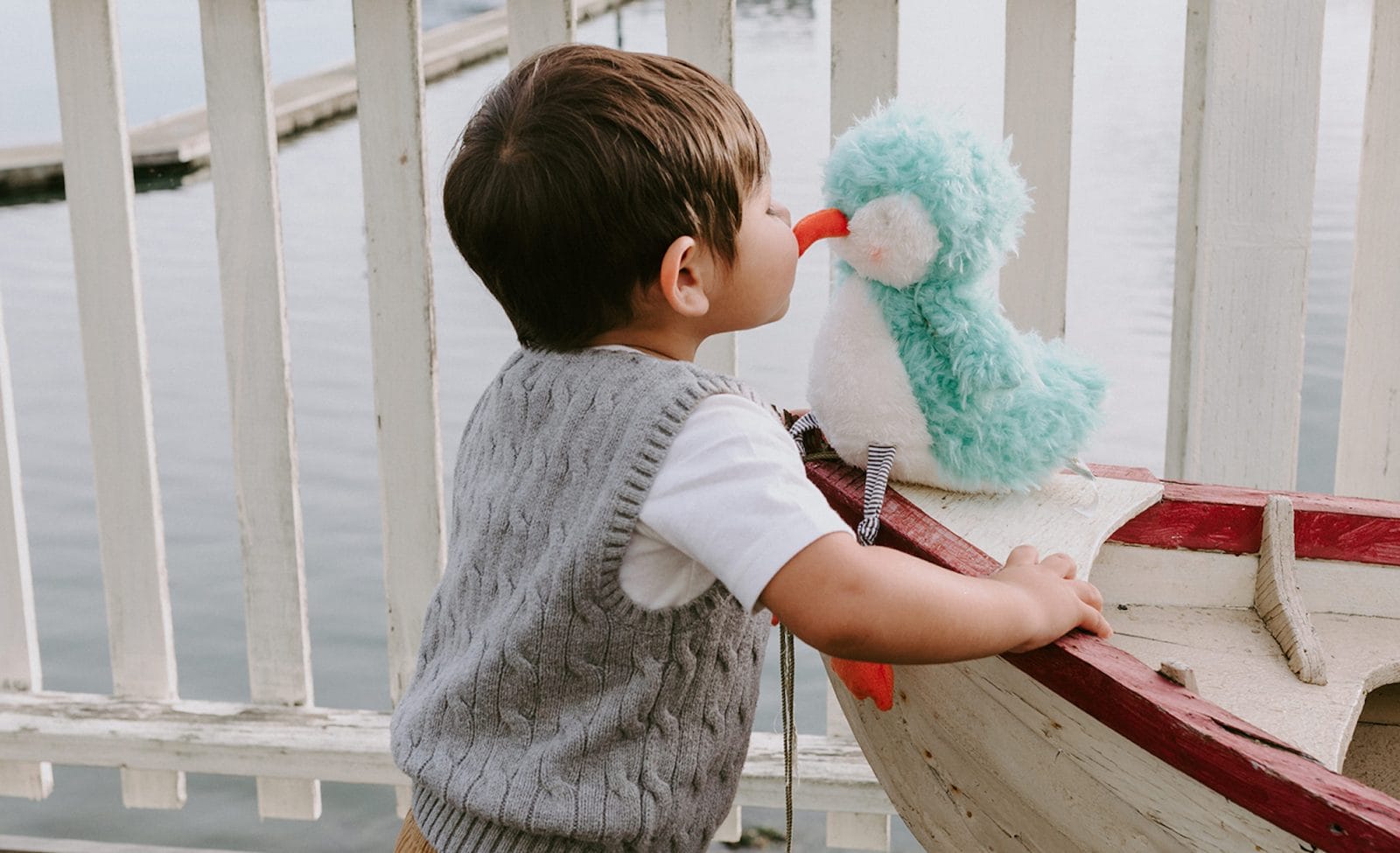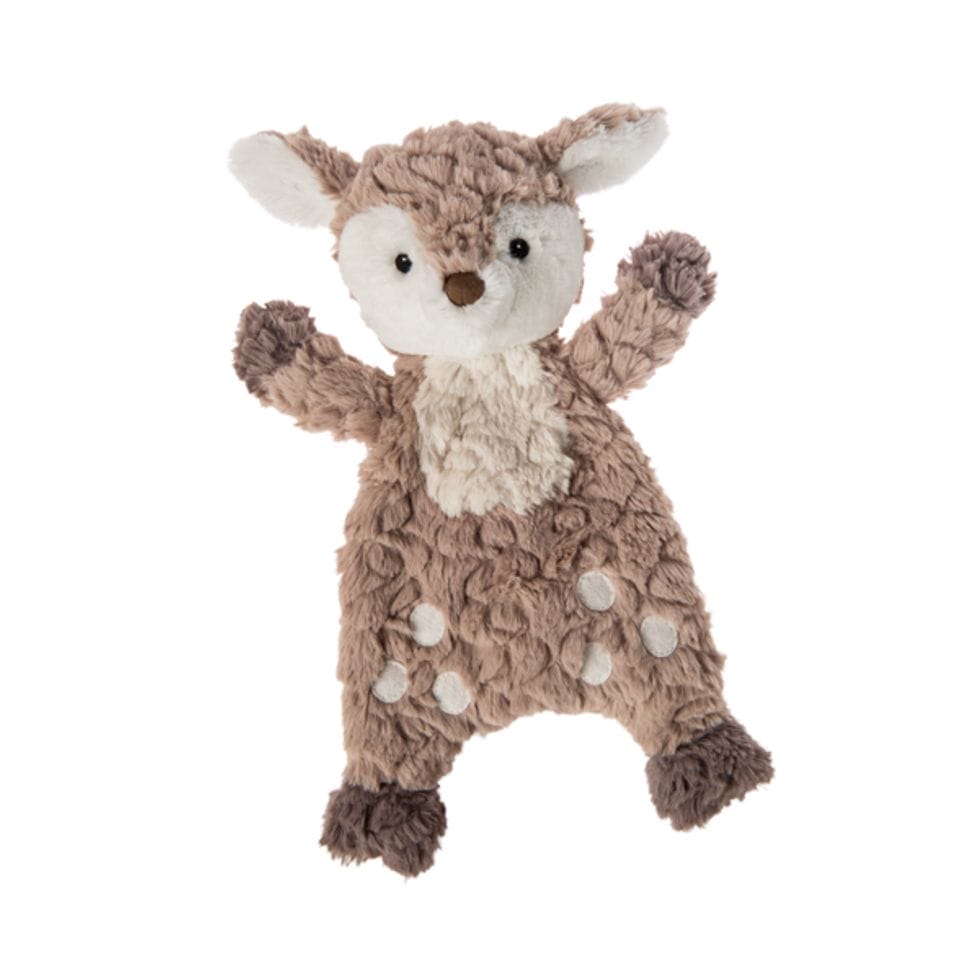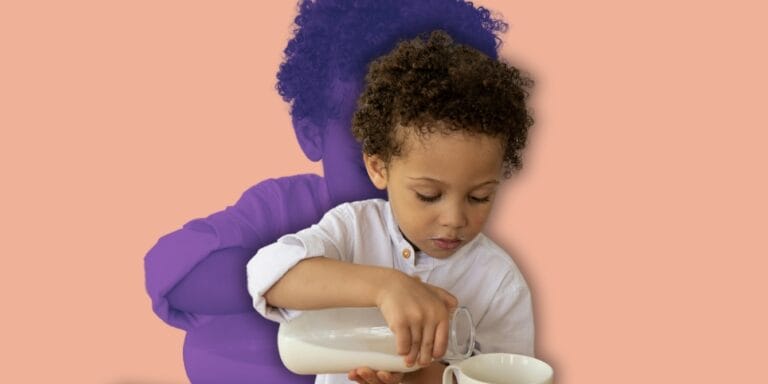It’s science: Your child’s favorite lovey (or blanket) fosters independence

Your child's "lovey" is way more than just a toy or a blanket—in fact, a lovey gives your little one emotional strength to grow and adapt.
Table of Contents
- According to the American Academy of Pediatrics (AAP), a transition object can be an important source of emotional support for your child.
- By offering security and fostering independence, a transition object helps your child move through different stages in life.
- Although most kids keep their transition object through their preschool years, it's completely normal if your child shows no sign of giving it up beyond then.
- We've curated the softest, sweetest loveys in the Motherly Shop. Check out some of our favorites:
- Bunnies by the Bay Piper sandpiper
- Bunnies by the Bay wee nibble bunny
- Mary Meyer putty fawn lovey
- Mary Meyer putty elephant character blanket
- Mary Meyer Hammie the pig
Halfway home and the sad little cry from the back seat was loud and clear, ” Mama! My ‘draff !”
I knew I had to turn around. My little one’s messy and mangled stuffed giraffe was worth the drive back. To go without this tattered token of security would mean tearful drop offs, sleepless afternoons and prolonged evenings spent offering various substitutions—other stuffies and blankets, even books—that could not replace this one chosen and cherished random recipient of my kid’s devotion. Having their lovey in their arms was worth every effort of the retrieval.
The blankets, bears and soft items children adopt and carry with them are what psychologists call transition objects. Chosen by your child to provide comfort and predictability , transitional objects represent your child’s feelings for and experience of *you*. But don’t worry, mama, your child’s transition object is not a replacement for you, but instead a positive indication of your healthy maternal–child bond that enables growth and development—and helps them become more independent.
Your child’s ability to separate from you begins by first clinging to you, and then to a rendition of you that provides the continuity of soothing, comfort and closeness you’ve given them. Your child uses their transition object to preserve and internalize this sense of security so they can more easily make the emotional transition from dependence on you to independence from you.
According to the American Academy of Pediatrics (AAP), a transition object can be an important source of emotional support for your child.
Not only does a transition object communicate your affection when you are not present, it can also serve as a foundation for emotional regulation , acting as an attachment figure that empowers your child with a sense of comfort and security to cope with your absence . From day care goodbyes to bedtime goodnights, in these moments a soft lovey like a blanket or bear can be faithful companions, fortifying your child against the short-term separation anxiety that must occur to meet their long-term need for more independence.
By offering security and fostering independence, a transition object helps your child move through different stages in life.
Transitional objects have the capacity to give your child the reassurance they need and rely on to feel grounded enough to explore. Meeting their short-term need to cope with separation is key in tackling the long term need to move toward autonomy . Ethnologist and founding father of psychoanalytic anthropology, Dr. Géza Roheim believed that with a sense of security, children feel safe enough to take the small risks that help them feel confident and unafraid to take larger risks as they explore and grow .
Although most kids keep their transition object through their preschool years, it’s completely normal if your child shows no sign of giving it up beyond then.
In a study published in Pediatrics , the journal of the American Academy of Pediatrics, researchers found that about half the children studied formed an attachment to an object in infancy, and then about half of those kids kept it until age 9. Other studies indicate that children who were emotionally attached to a transition object appeared to mature and adjust like other children.
But if your child doesn’t seem to show a preference for a particular stuffie, lovey or blanket, that’s nothing to be concerned about. Research has also demonstrated that not having a transition object has no significant bearing on behavioral problems in adolescence.
Bottom Line: There’s a reason why your child is so fiercely attached to their lovey—this comfort object stands in for you, mama, the first and most important relationship that they have throughout their lives.
[Editor’s note: According to AAP, for safe sleep , if your child is under 12 months of age, blankets should stay out of the crib—whether your baby is playing or napping. Blankets can increase the risk of smothering, strangulation, suffocation or sudden infant death syndrome (SIDS). The only thing that should be in the crib at night is your child. But if your child must have one when it is time to sleep, according to Dr. Harvey Karp , for the first 12 months, the only safe lovey is a pacifier and white noise—an “auditory lovey.”]
We’ve curated the softest, sweetest loveys in the Motherly Shop. Check out some of our favorites:
Bunnies by the Bay Piper sandpiper

Teddy bears are great and all, but this charming little guy with his spindly legs and fuzzy blue fur makes a very fun companion.
Bunnies by the Bay wee nibble bunny

Heirloom quality and buttery-soft, this classic bunny is perfectly sized to be tucked under your little one’s arm and taken along for a lifetime of adventures.
Mary Meyer putty fawn lovey

With an easy-to-grab under-stuffed body and luxe minky fabric, this adorable fawn is ideal for little hands. Even better? It’s totally machine-washable.
Mary Meyer putty elephant character blanket

With a silky lining and deliciously soft fur, this blanket-style lovey is as soothing as it is sweet.
Mary Meyer Hammie the pig

We love the high-quality loveys from Mary Meyer whose scraggly fur and hand-embroidered details make them feel extra special. Hammie the pig, with their jaunty handkerchief and kissable little face is no exception.
We independently select and share the products we love—and may receive a commission if you choose to buy. You’ve got this.


































